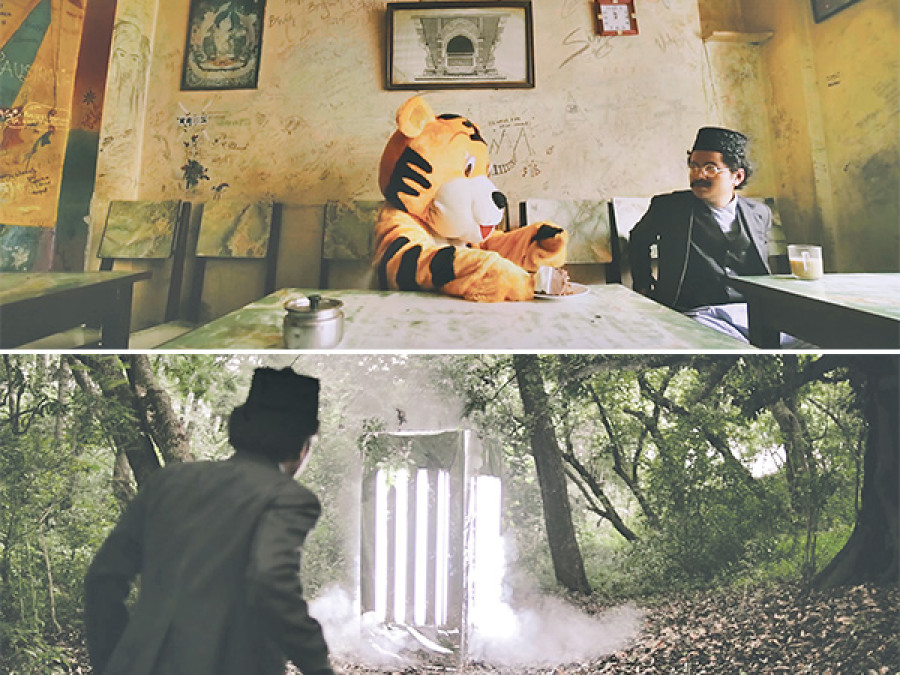Miscellaneous
To the future and beyond
Less is more: That mantra now seems to be spreading among Nepal’s music video artists. In a little over half a decade, the drab visuals that accompanied most local songs have given way to a more aesthetically
Binit Bana
Less is more: That mantra now seems to be spreading among Nepal’s music video artists. In a little over half a decade, the drab visuals that accompanied most local songs have given way to a more aesthetically and context-aware visual art. The narratives now include more layers, and the audio and the visual elements have today evolved to work as both complementary and separate entities in themselves: The right artists can use their interplay to both weave together worlds or split them into parallel scapes. The video for the pop/rock duo Topi’s Mitho Bihani not only builds on this style but also brings a familiar and largely local sensibility to a tried and tested narrative style.
The concept of Mitho Bihani is nothing revolutionary—it’s a basic time-travel story, which has become a genre in itself. The video works because the execution is spot on. Topi, along with Fuzz Factory Productions, successfully transplants a pet-Hollywood trope onto a Nepali setting; more impressively, they are able to work the narrative in such a way that the time-travel element does not hog the centrestage; instead the trope functions as merely a skeleton around which the larger story is fleshed out. In the video, we go on a journey through time and space with Barmu Sau. And through his bespectacled eyes, we take in the world, as he zips forward 68 years into the future—our present day—after he stumbles upon a glowing, breathing, inviting, Dr Who-ish looking contraption.
We start out in a path in the middle of a lush, secluded woods, from where both Barmu Sau, and we—the audience—are picked up and planted in the middle of a deserted Kathmandu alley. And he is then plopped into the city’s various locales, where he gets to engage in interesting encounters with the denizens of modern-day Kathmandu, a concrete jungle that stands in stark contrast to the rustic environs he used to inhabit earlier (as shown in the woods scene that kicked off the video).
Along the way, Barmu Sau happens to encounter his mirror image—a younger, better groomed and more wide-eyed version of himself—and he also runs into the ever-present jolly tiger of the Topi videos. The younger Sau, startled on seeing his older doppelganger, makes a beeline for his house, with Barmu Sau in hot pursuit. The chase results in a teary family reunion. All of this happens as Pramithus Khadka, the lead singer of Topi, provides the background score in which the lyrics speak of accepting mistakes, moving forward and changing for the better with the undying support of a loved one.
Mitho Bihani is simple yet elegant. There are no outlandish props and shots, and it does not even feature a whole host of central characters—even the centrepiece of the video, the time machine, is something you could build in your own home, if you so wished. But everything works because the video goes about its business without making a big fuss about what it’s doing. The visuals provide perfect counterpoints to the music, and we the audience live the wonder and amazement of a man taken out of his element—because every new encounter is a novel one for Barma Sau. In effect, as we look at Kathmandu through Barma Sau’s eyes, we learn to see the city through a fresh pair of eyes too.
One of the challenges for contemporary filmmakers in Nepal has been the difficulty in marrying a Western artistic ethos to local content in order to create the modern Nepali aesthetic: to create art works that today’s Nepali audiences, who have grown up on a staple of international art products, will appreciate. The problem is that both the Nepali artist and audience alike today understand what works and what doesn’t in cinema, art, theatre, music and music videos. The sophisticated Nepali of today can see bad ripoffs and badly constructed videos from a mile away.
Thankfully, Mitho Bihani, instead of being a cheap derivative of some MTV or Bollywood video, stands as a great example of a local product that has been crafted exceedingly well. And it comes across so well because we the audience can see that the video’s creators are having fun being creative, light-hearted, etc, even as we have our curiosity piqued, together with Barma Sau, at every new turn along his fantastic journey.




 7.12°C Kathmandu
7.12°C Kathmandu










